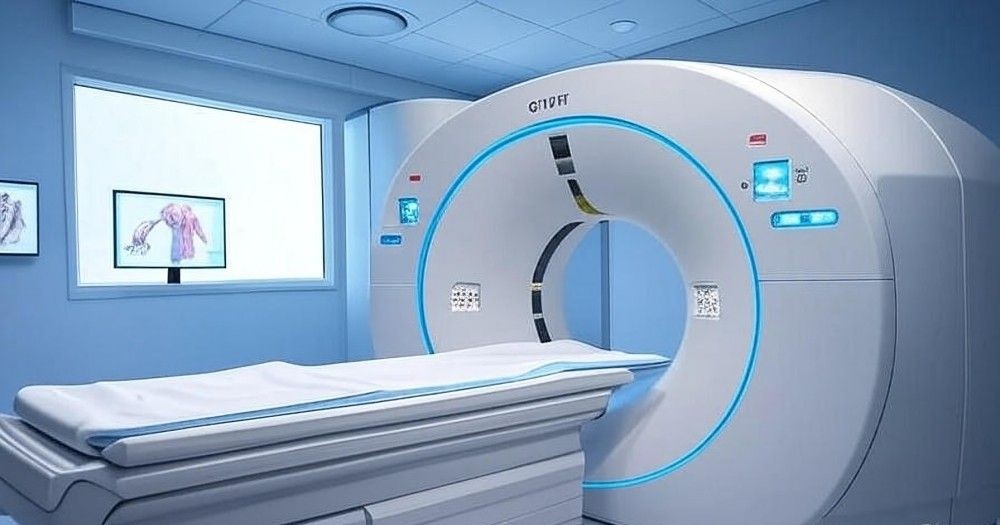Introduction
Today’s doctors check the entire condition of the body through imaging, that too without making any cuts. CT scan and PET CT scan – both are useful things, but for different purposes. For those who are thinking of getting a medical check-up or test done, it is important for them to understand what is the difference between CT and PET CT scan. Let’s understand about it in simple words.

What is CT Scan?
CT Scan stands for Computed Tomography, a diagnostic method that captures detailed cross-sectional images of the body using X-ray technology. In this, a big machine takes detailed photos of the inside of the body through X-rays. Be it bones, organs or soft tissues – everything is visible clearly.
How does it work?
During the procedure, the patient lies on a motorized table that slides into a large circular scanner. The machine actively rotates and sends X-rays from various angles to capture internal views. Then, the computer actively creates a photo of each layer – this is called a “slice”. These slices form a full 3D image. Sometimes, doctors also use a contrast dye, which makes veins and some organs look more clear.
What is it used for?
CT scan actively helps in many cases:
- Bone rupture
- Intestinal bleeding
- Cancer or tumor
- Heart problems
- Lung problems
- Stomach pain, kidney stone, etc.
In which case is it more useful?
In an accident or emergency, doctors first perform a CT scan – because it quickly provides results and is widely available.
What is PET CT Scan?
PET scan actively combines two technologies – one PET and the other CT. PET CT integrates structural and functional imaging. While the CT component actively highlights anatomical details, the PET part actively shows how tissues and organs function on a cellular level. For instance, it is very useful for diseases like cancer.
How does it work?
PET part:
Doctors inject a radioactive liquid into the patient – for example, FDG. Cells that use more glucose (like cancer cells) actively absorb it. The PET scanner then detects gamma rays and actively shows where more activity occurs.
CT part:
This actively provides a clear image of the structure. Together, PET and CT deliver a solid image – in which both function and structure are clearly understood.
Moreover, the process takes some time – first, doctors give the injection, then patients wait for 30-60 minutes. After the preparation and waiting period, the scan itself usually lasts around 30 to 45 minutes, depending on the area scanned and the condition examined.
What is it used for?
PET CT actively serves in cases like:
- To find cancer and know its stage
- To see the response to treatment
- Brain problems (Alzheimer, epilepsy)
- Heart tests (blood flow, tissue damage)
It is very useful in cancer
PET CT actively detects cancer cells early – even when they are not visible in CT scan or MRI. Therefore, to start treatment and to see whether it is working or not – PET CT is the best.
Comparison of PET CT and CT Scan – Side-by-Side
| Feature | CT Scan | PET CT Scan |
|---|---|---|
| Technology | Extracts image from X-ray | PET (tracer) + CT (X-ray) Combo of both |
| Purpose | Shows structure – shows bone, organ, tissue | Structure + function both |
| Radiation | Less radiation | More radiation (mix of both tracer + CT) |
| Timing | Is done in 5-10 minutes | Takes 2 hours (mix of both tracer + scan) |
| Use Cases | Accident, fracture, stomach pain, lung problem | Cancer, brain problem, heart problem |
When is PET CT More Useful?
When the doctor cannot see anything but also wants to understand what is happening inside, PET CT is the best choice. For example:
Cancer Detection
It actively detects even hidden cancer and shows how much it has spread.
Seeing the Effect of Treatment
PET CT actively reveals whether chemo or radiation is working or not.
Brain Issues
It actively shows the function of brain cells in conditions like Alzheimer, epilepsy.
Heart Issues
It actively determines whether the heart tissue is alive or damaged.
Risk and Precautions
Since both scans involve exposure to radiation, patients should actively consult their doctor about the necessity and safety, especially if they have had recent imaging tests.
Difference of Radiation
CT Scan:
It involves low radiation – but if done repeatedly, it can cause problems.
PET CT:
It involves more radiation – but one scan offers more benefits.
What to Do Before the Scan?
CT Scan:
Sometimes, patients must fast. If doctors plan to use contrast dye, patients should definitely inform them about allergies or kidney problems.
PET CT:
Patients should fast for 4-6 hours, avoid exercise, and steer clear of caffeine. Additionally, diabetics should actively consult a doctor.
Who Should Avoid It?
Pregnant Women:
Radiation can actively harm the fetus.
Kidney Patients:
The dye can cause problems.
Individuals with known allergies should actively inform the medical team beforehand, as the contrast agent or radioactive tracer might trigger allergic reactions in sensitive individuals.
Last Thing – Conclusion
While a CT scan captures the body’s structure, a PET scan goes a step further by also showing how organs and tissues are functioning, which is crucial for diagnosing certain complex conditions. PET CT is best for serious problems like cancer, brain and heart. But it depends on the condition – the doctor will tell which scan is better.
If you are going for a scan or want to know about imaging then this guide is useful. If you like it then share it with others, and if you have any doubt then comment!
FAQs
The work and technology of PET CT and CT scan are different. CT scan is done only with X-rays which show the structure of bones, organs, and tissues inside. But PET CT scan uses a radioactive tracer which shows metabolic activity inside the body and when combined with CT scan gives a clear anatomical image. This is more useful when detecting cancer, brain problems or heart issues.
In some conditions, such as in detecting cancer, PET CT is more accurate because it shows changes going on inside the cells. But if there is a structural problem like fracture or organ damage, a simple CT scan is sufficient. The scan is chosen as per the doctor’s advice.
PET CT scan is best for detecting cancer because it shows early metabolic changes in the disease, which cannot be seen in CT scan. PET CT can also be used for early diagnosis, staging and monitoring the effect of treatment. CT scan is used only for size or location.
There is radiation in both scans, but more in PET CT because tracer is also used in it. The risk of a single scan is low, but getting it done repeatedly can be a little risky in the future. Pregnant women and people with kidney or dye allergies must consult a doctor.
For a CT scan, you have to fast for a few hours if a dye is being used. For a PET CT, 4-6 hours of fasting is necessary. Exercise, caffeine and some medicines have to be avoided. Tell the doctor about your allergies, medicines and other conditions beforehand.
Yes, PET CT is not just used for cancer, it is also used for other conditions. Like brain problems – Alzheimer’s, epilepsy – and heart issues – to check blood flow or heart tissue. PET CT is very useful in complex cases because it shows metabolic activity.
The CT scan is done quickly – in just 5-10 minutes. PET CT scan takes a little longer – first the tracer is injected and it takes 30-60 minutes for it to circulate. Imaging itself takes 30-45 minutes. So the total time can take up to 2 hours. The process of each center can be different.
Yes, doctor’s referral is necessary for both scans. They are not done without need due to radiation. The doctor recommends the correct scan after looking at your symptoms and medical history.
Disclaimer
The information given in this blog is only for general knowledge. Consult a proper doctor before getting any medical scan done. This content is only for providing information, not a replacement for treatment. Do not take your health decisions on your own – always seek guidance from a qualified doctor. We try to provide correct information, but do not give 100% guarantee. Explore blogs for other health topics, but always confirm medical matters with a doctor.



